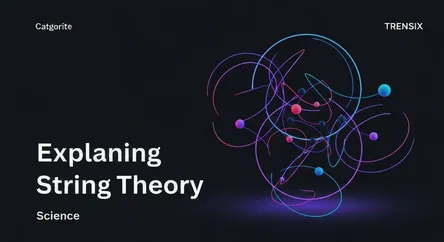Science
Explaining String Theory

What is string theory? Discover the framework that unifies physics by describing particles as tiny, vibrating strings in extra dimensions.
What is it?
String theory is a theoretical framework aiming to unify all fundamental forces of nature. It posits that the elementary particles in the universe are not points, but tiny, one-dimensional vibrating "strings." A string's specific vibrational pattern determines a particle's properties, like its mass and charge. It's a leading candidate for a "theory of everything" because it naturally incorporates gravity, reconciling it with quantum mechanics. For the math to work, the theory requires the existence of extra spatial dimensions beyond the three we perceive.
Why is it trending?
This theory's ambitious goal of explaining the universe from one idea keeps it in the spotlight. Its mind-bending concepts, such as extra dimensions and multiverses, consistently capture public and scientific imagination, making it a staple in popular science. While it remains unproven experimentally, any new developments in theoretical physics or high-energy experiments often reignite debate about its potential validity. This ongoing quest to find evidence keeps it a perennially trending topic at the frontiers of human knowledge.
How does it affect people?
Currently, string theory has no direct technological impact on everyday life. Its influence is indirect but significant. It pushes the boundaries of mathematics and abstract problem-solving, creating new intellectual tools. Culturally, it inspires curiosity about the cosmos and encourages interest in STEM fields by tackling some of the biggest questions about reality. It represents a powerful aspect of human curiosity—the pursuit of fundamental understanding, even when practical applications aren't guaranteed.